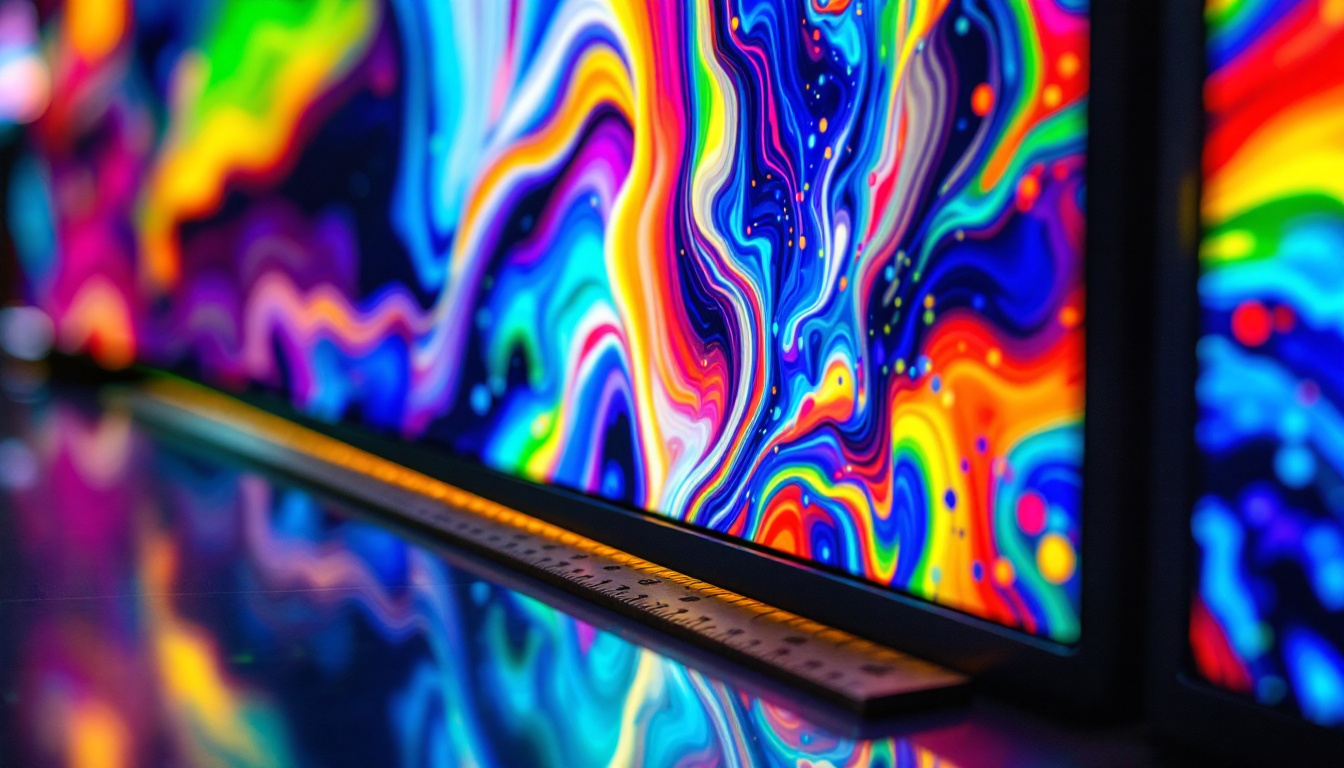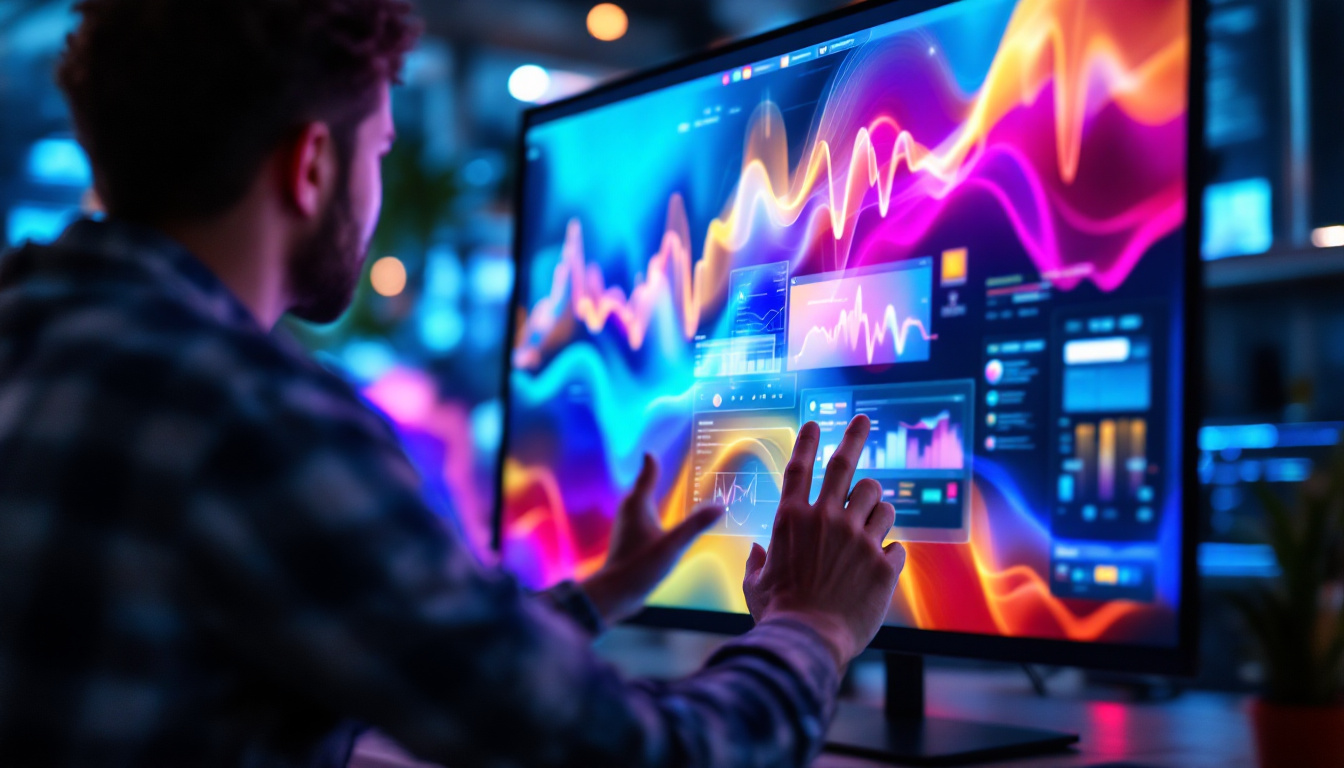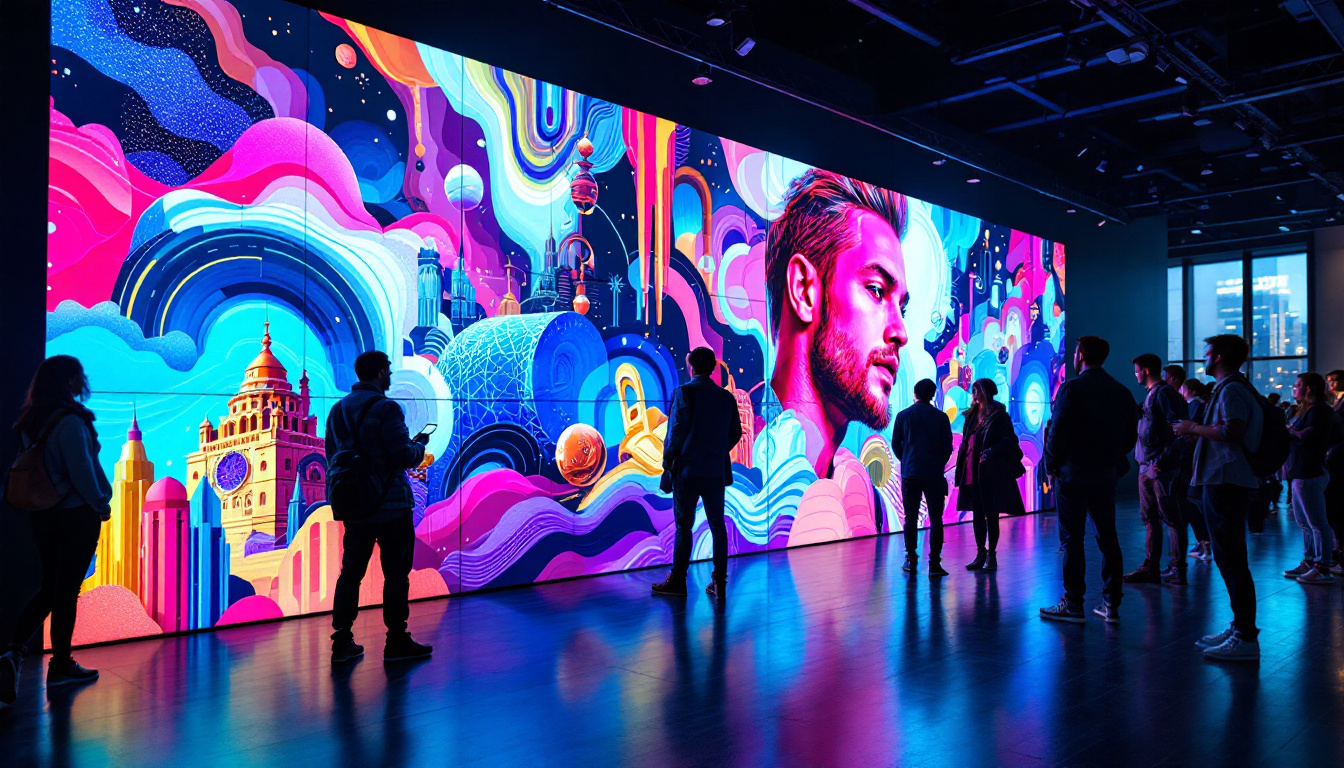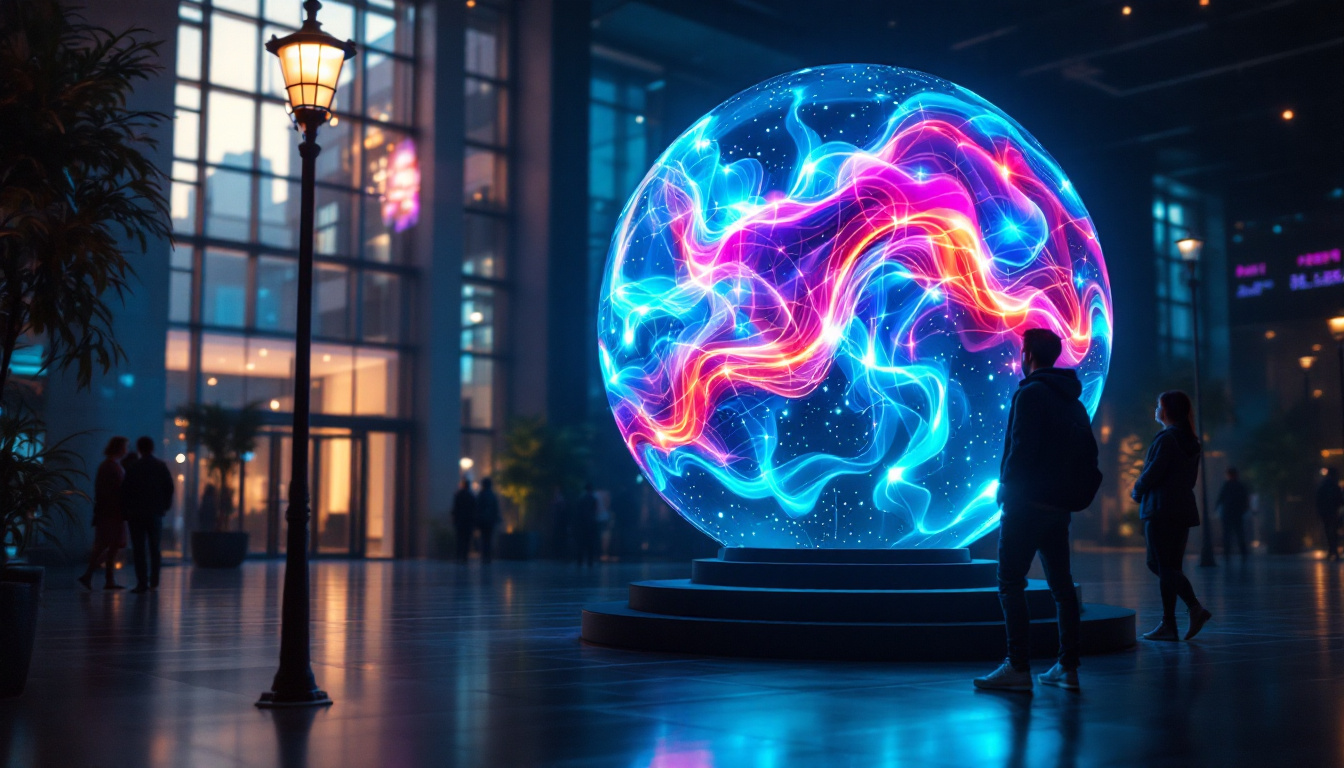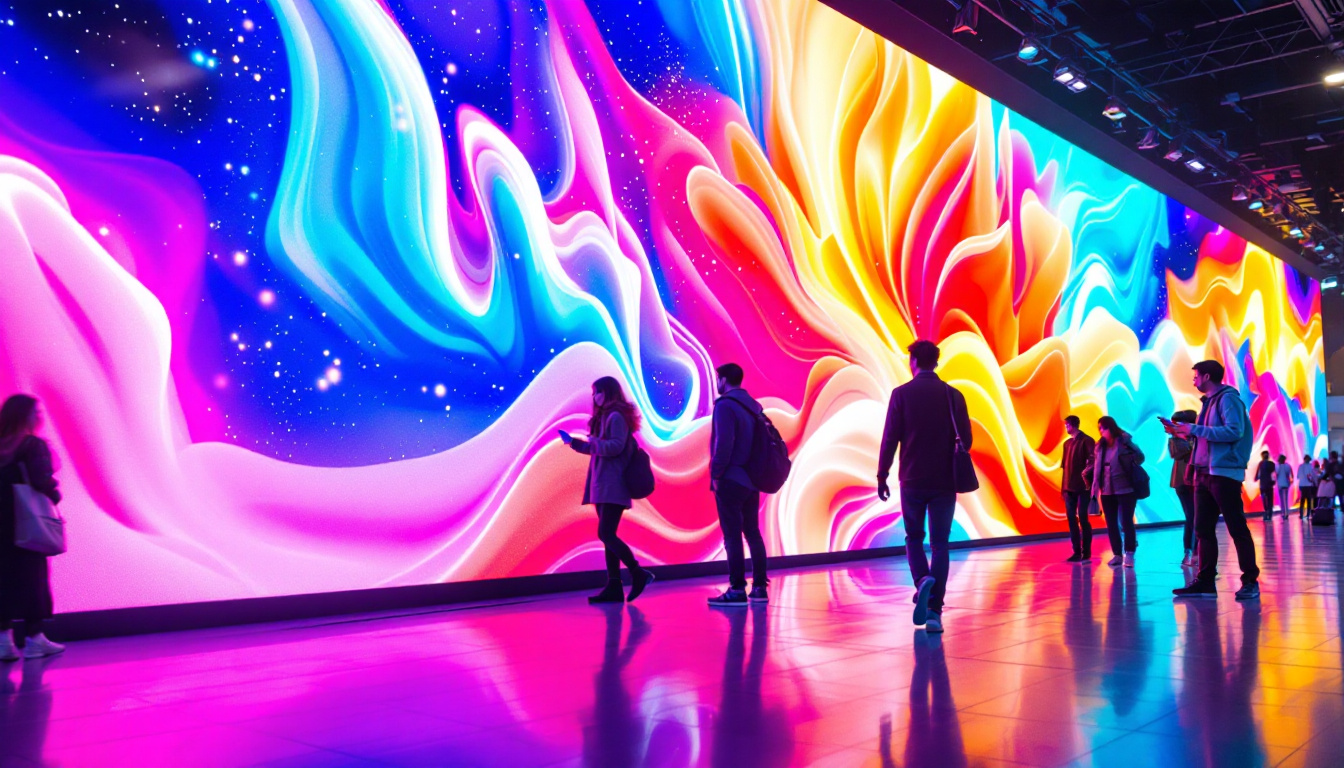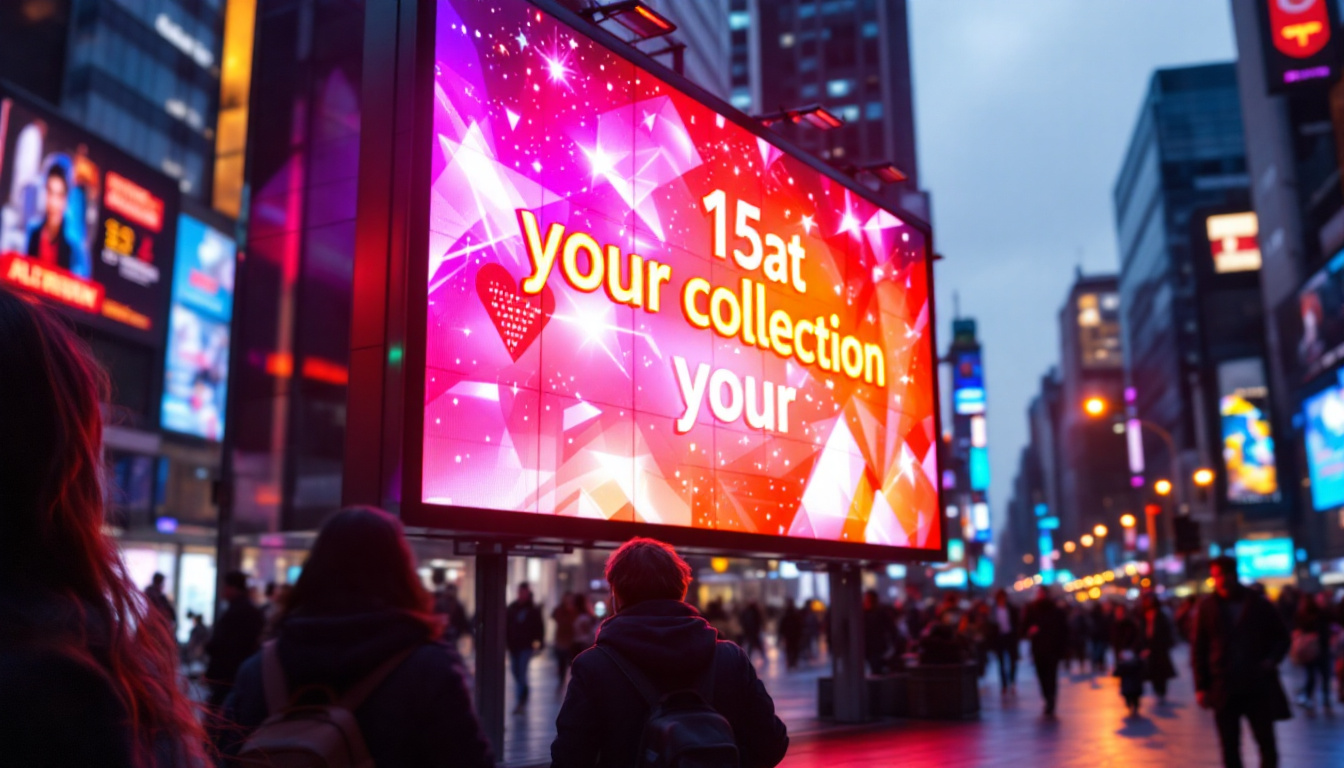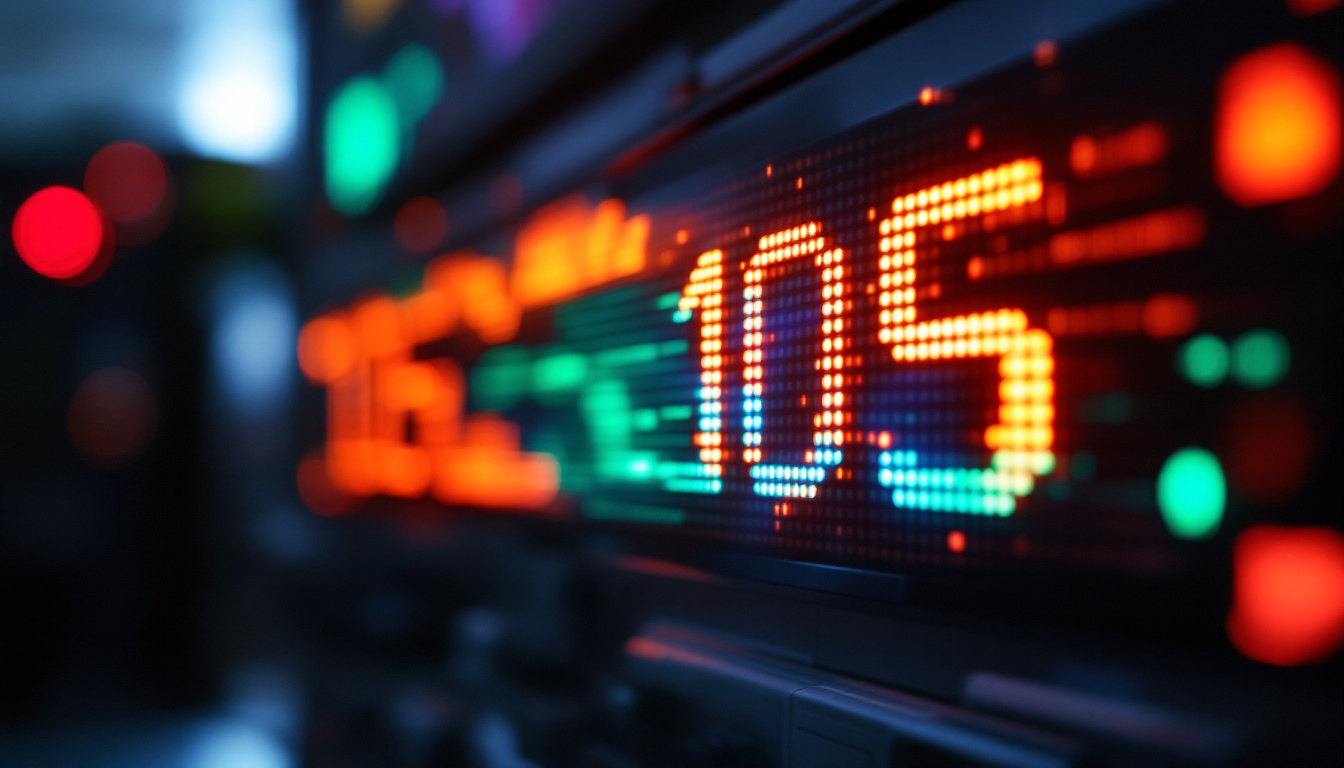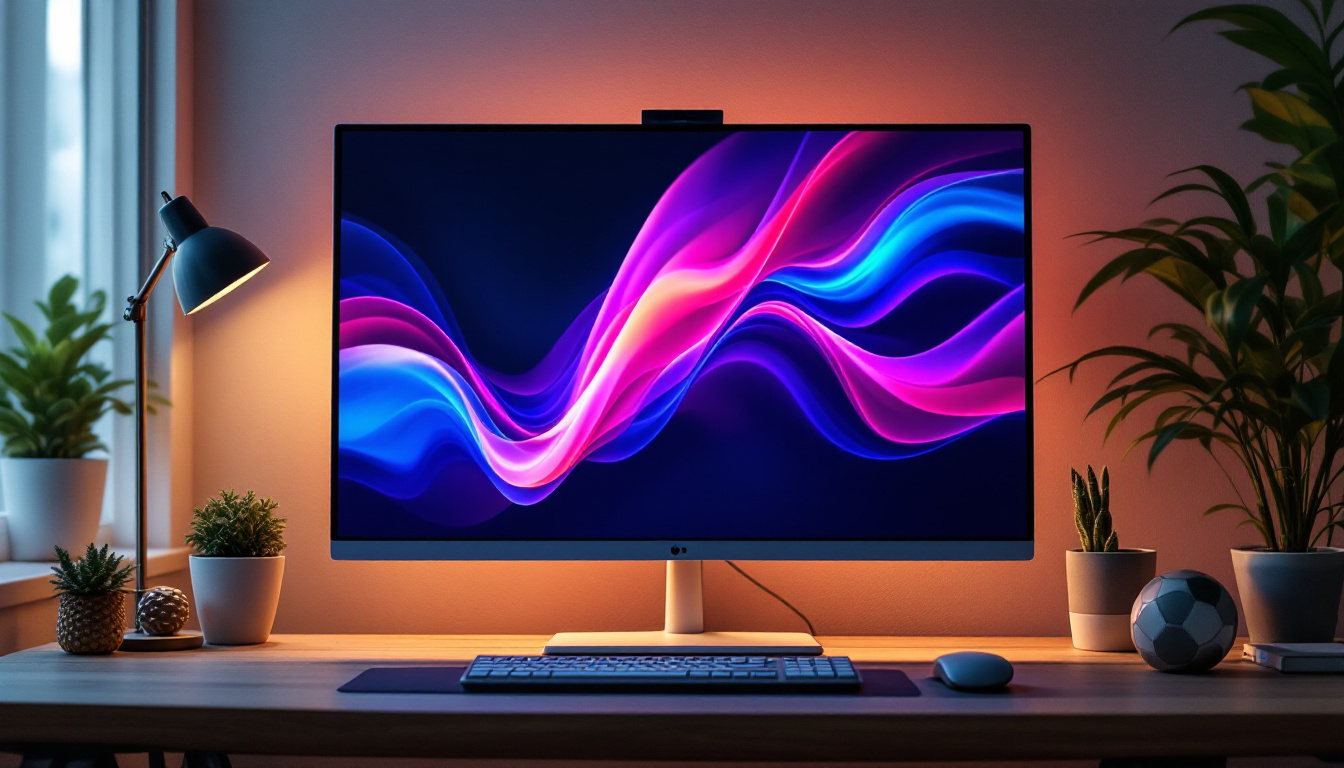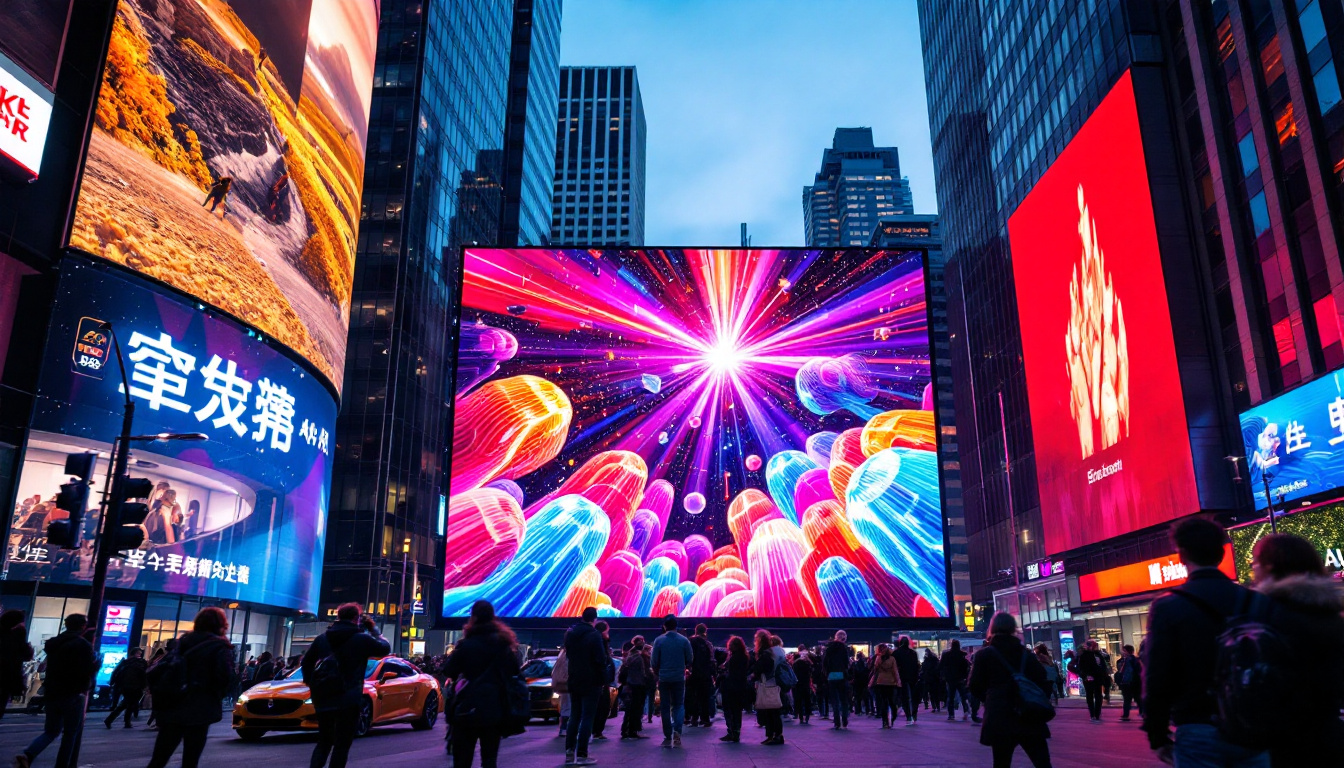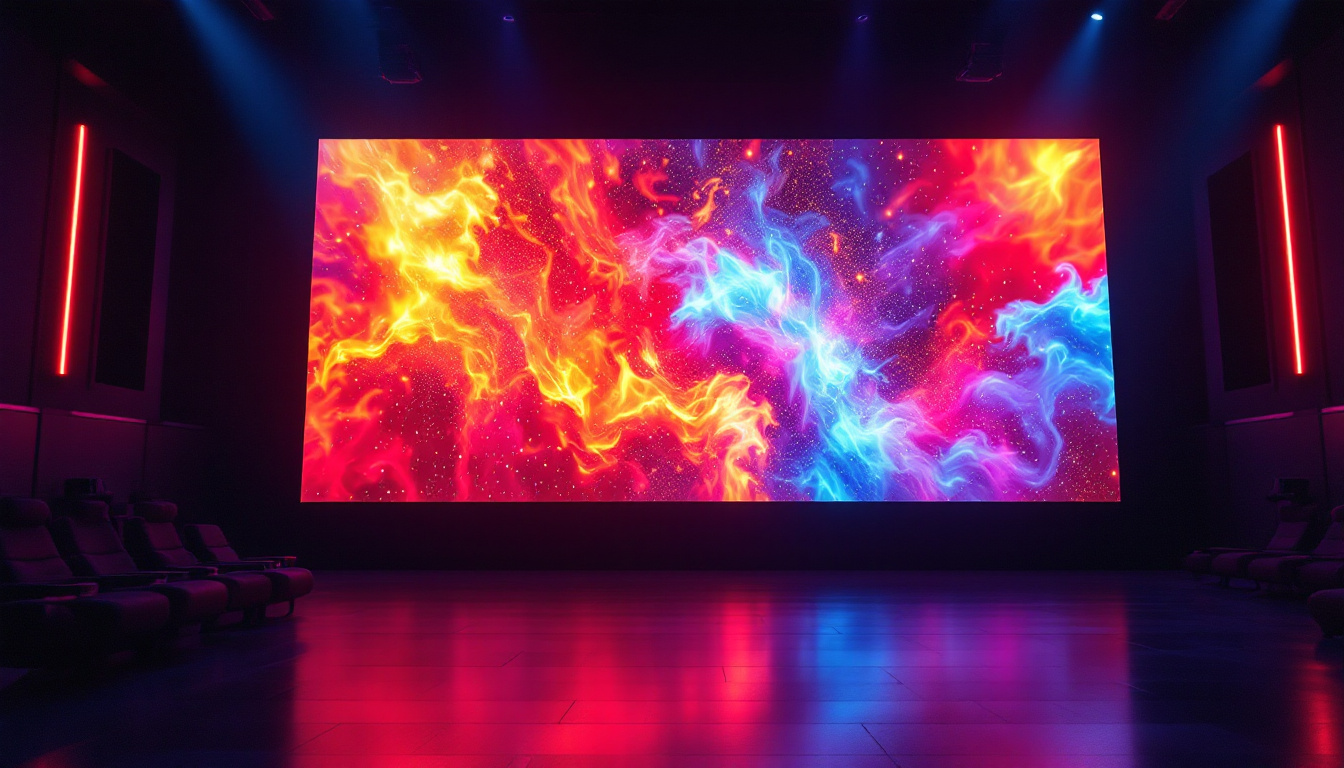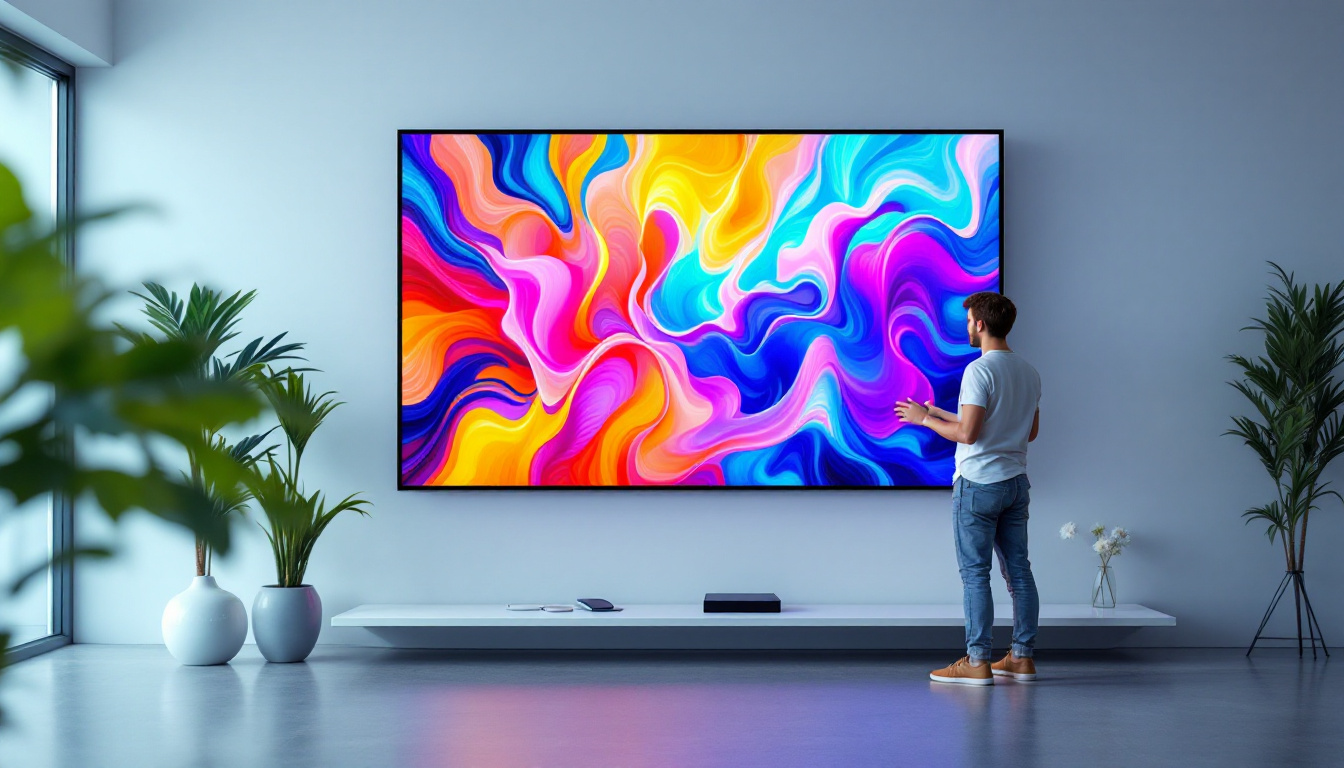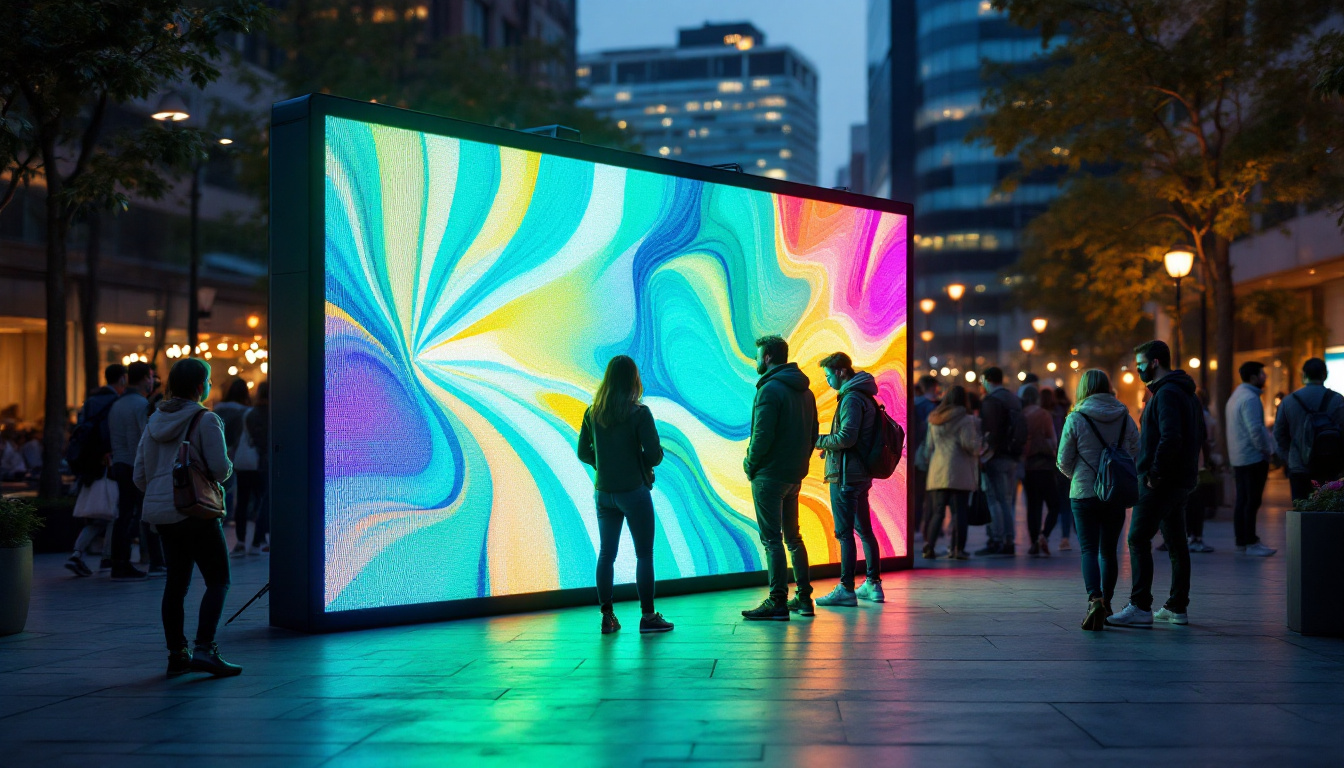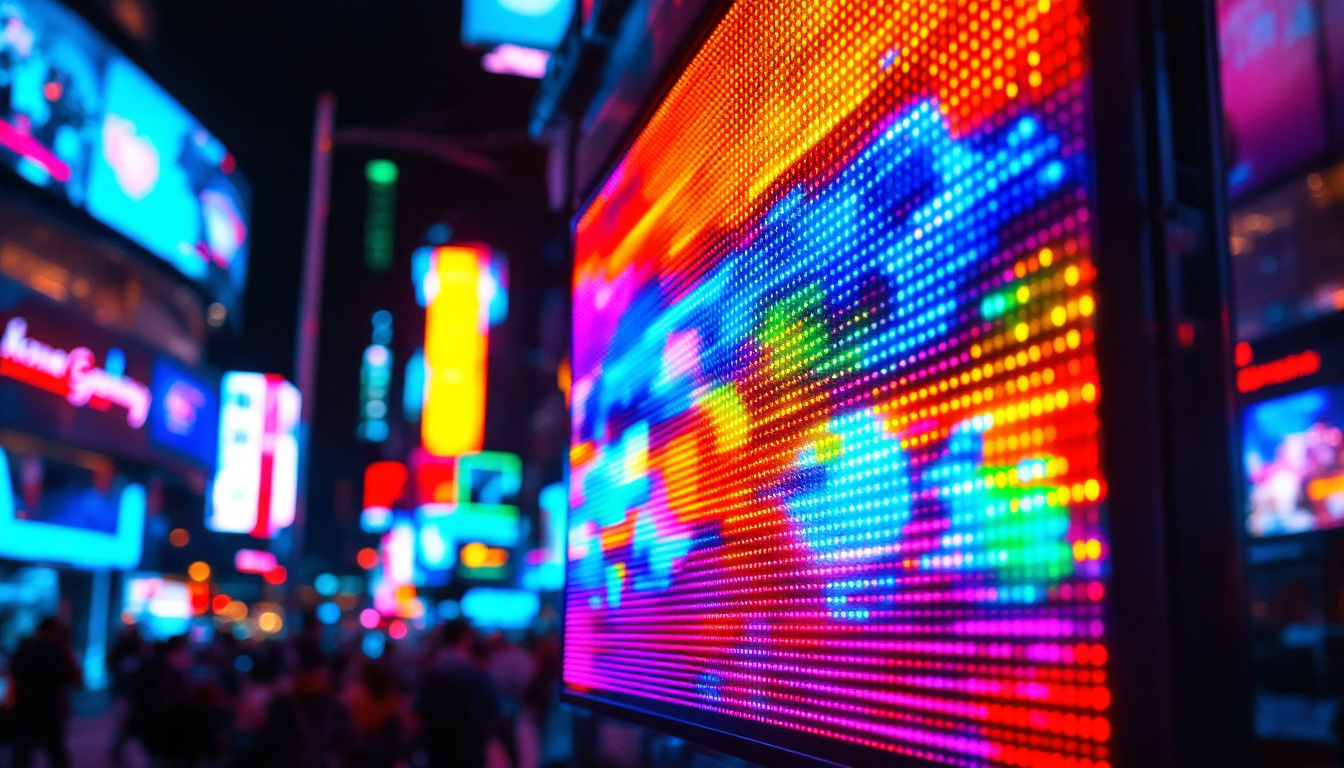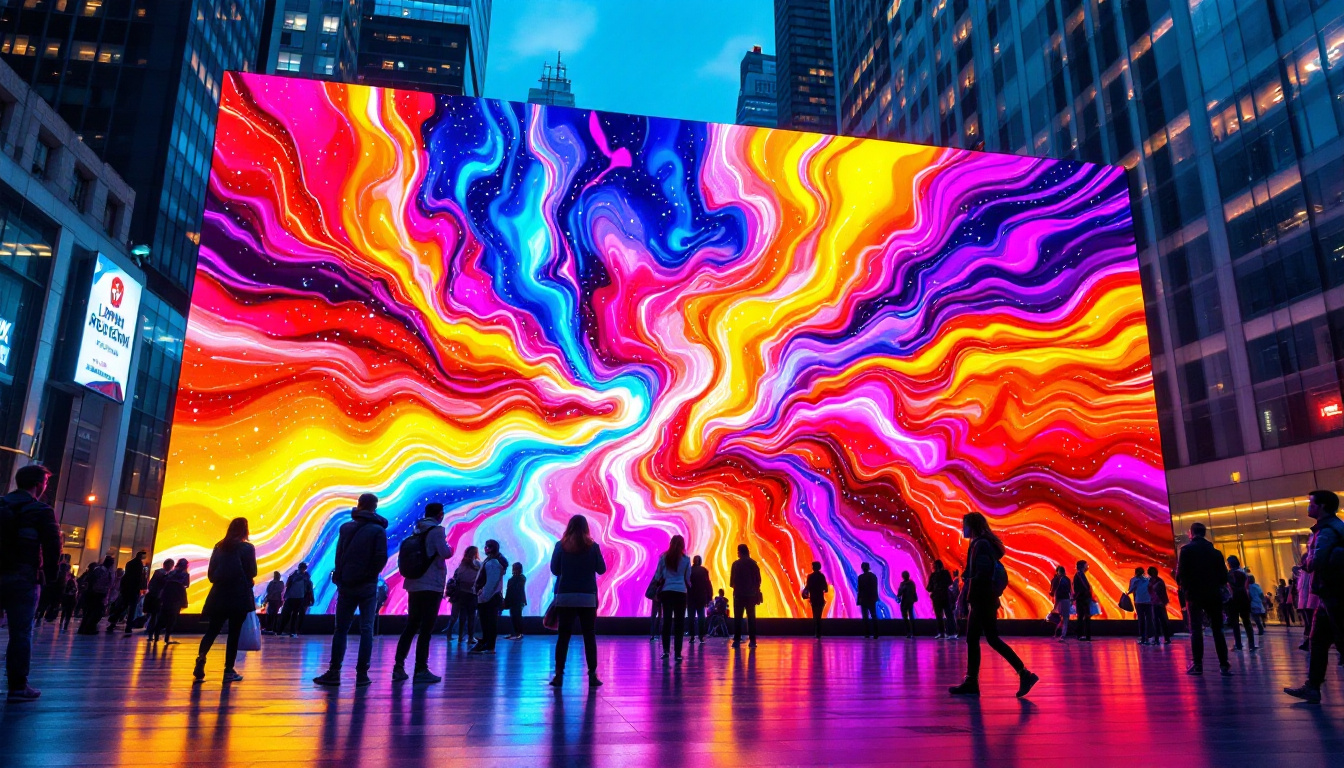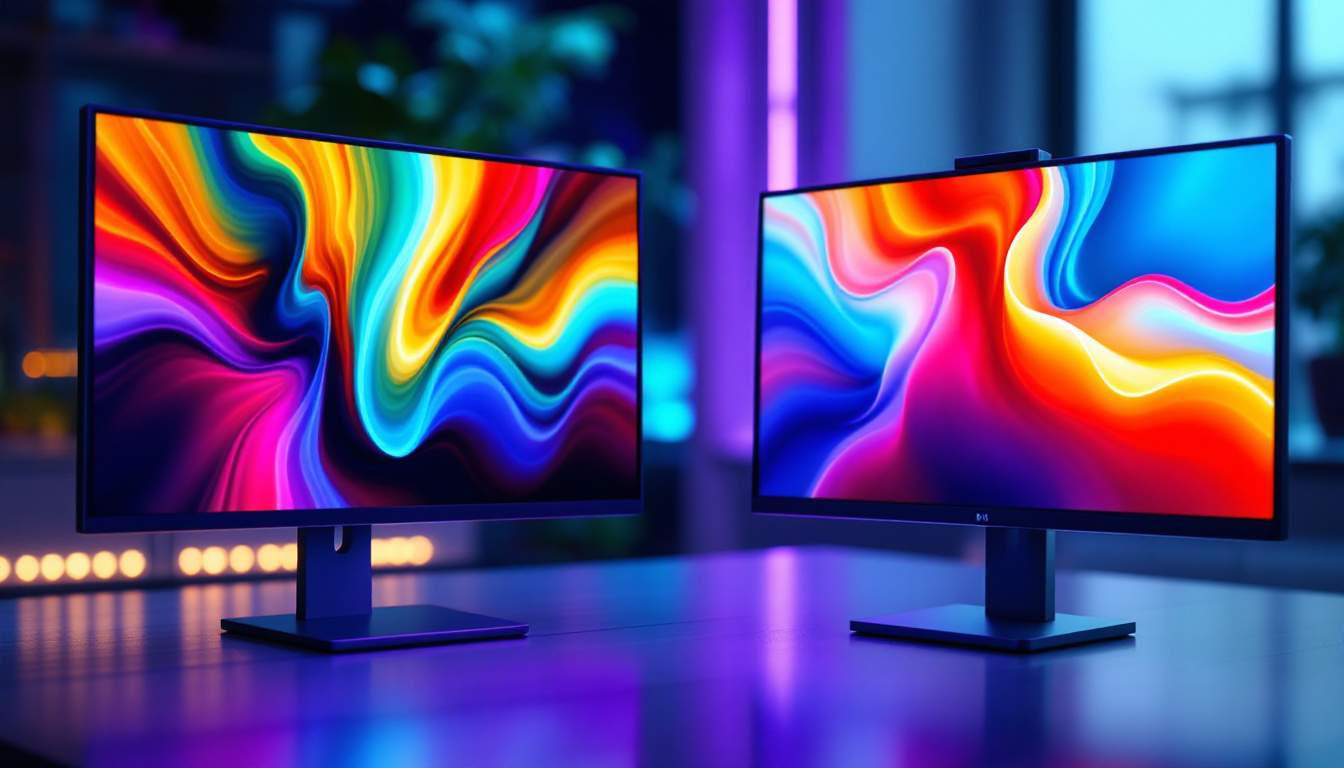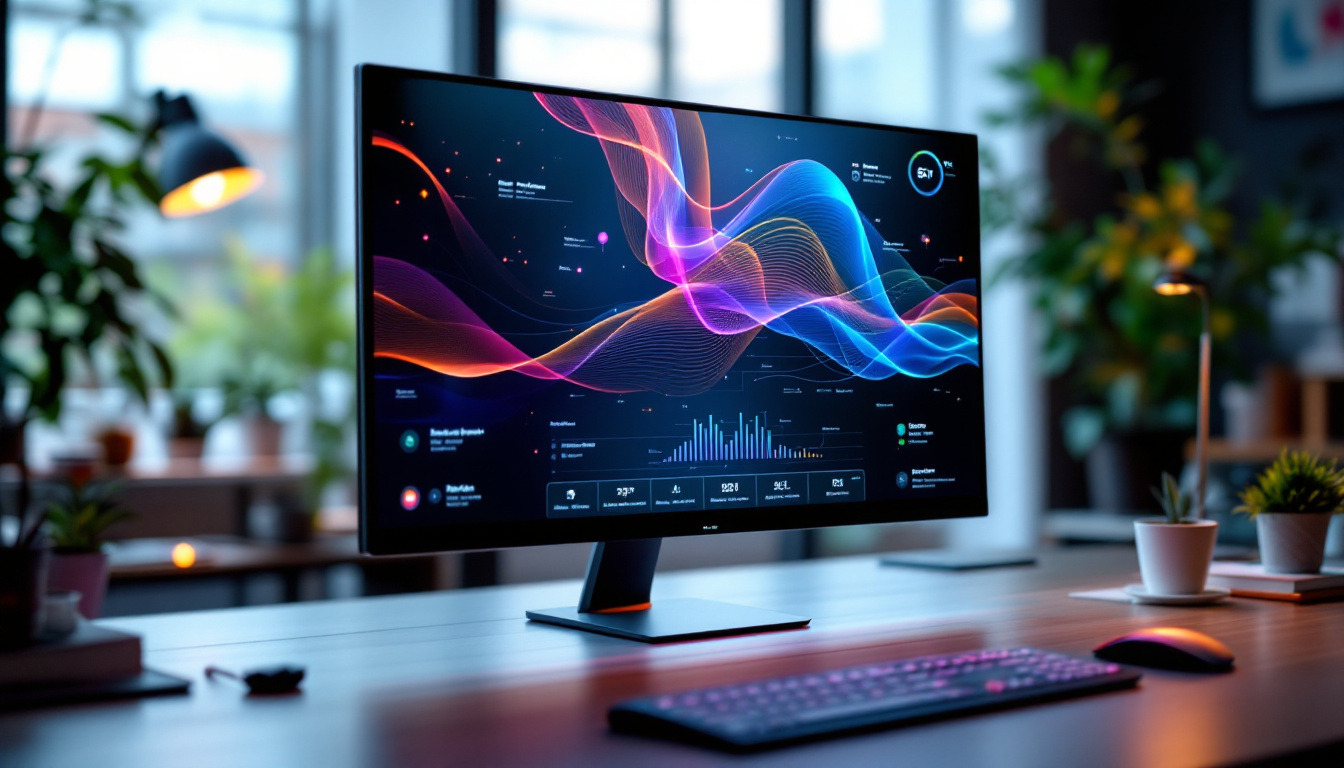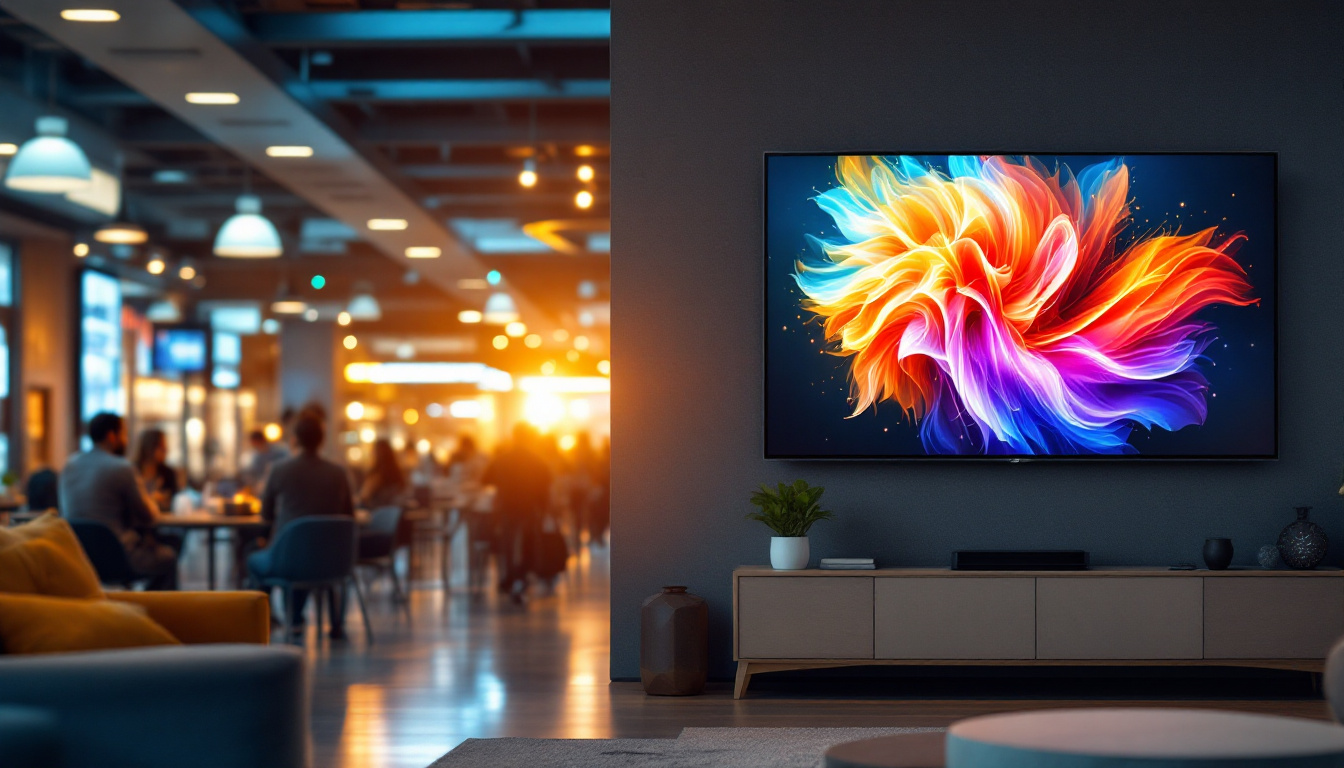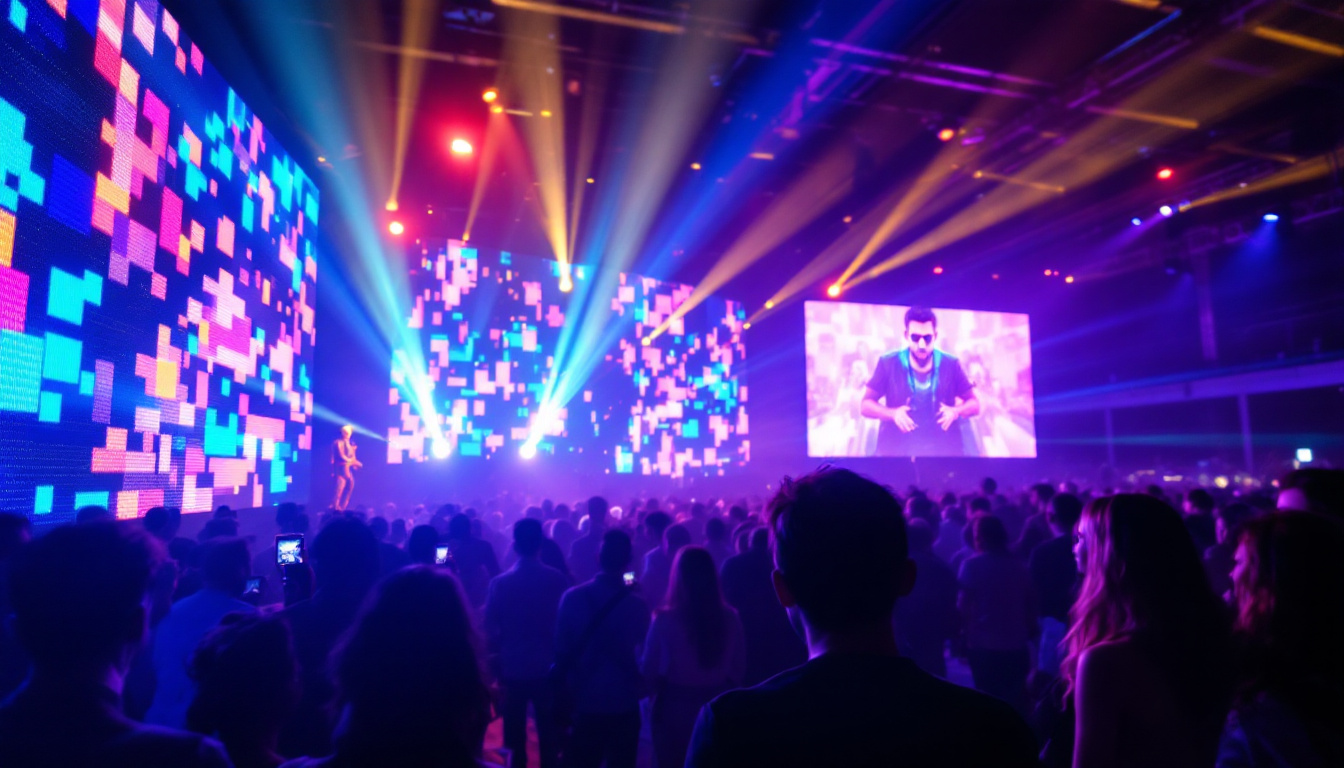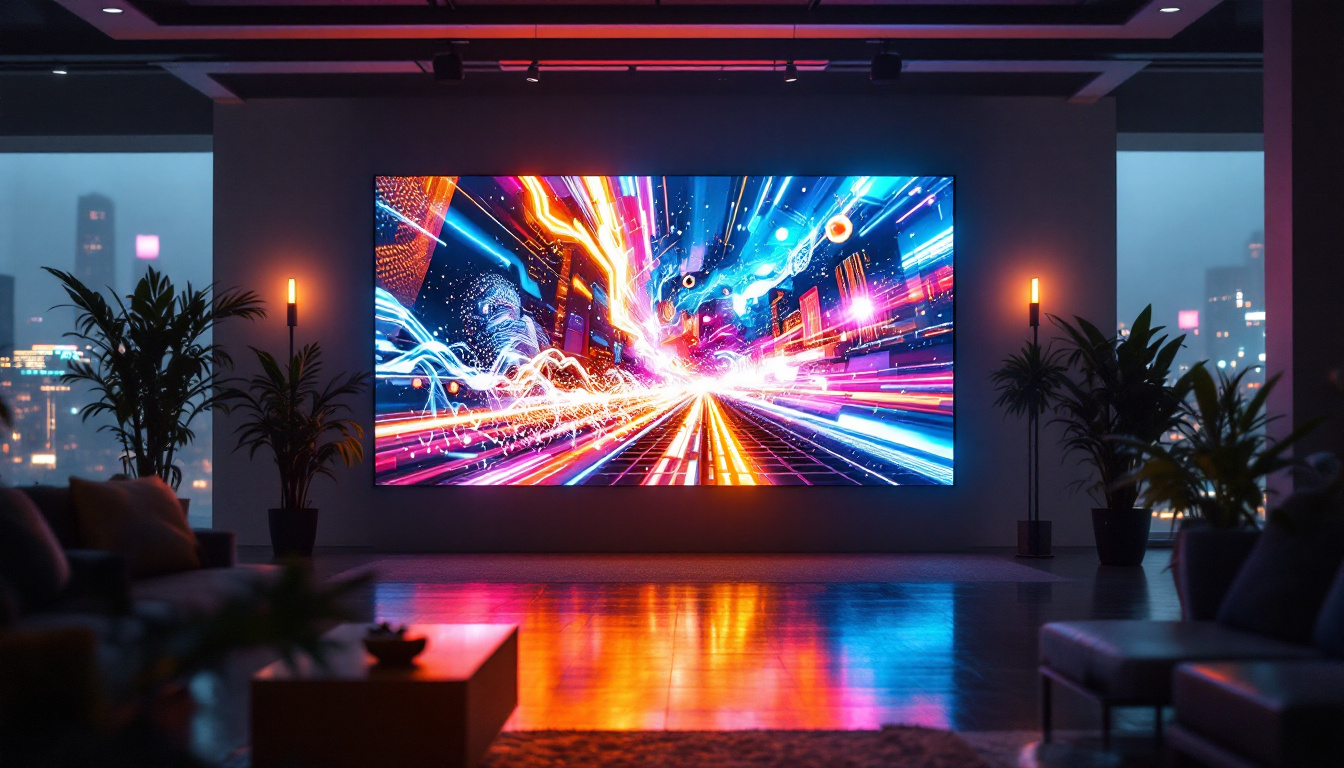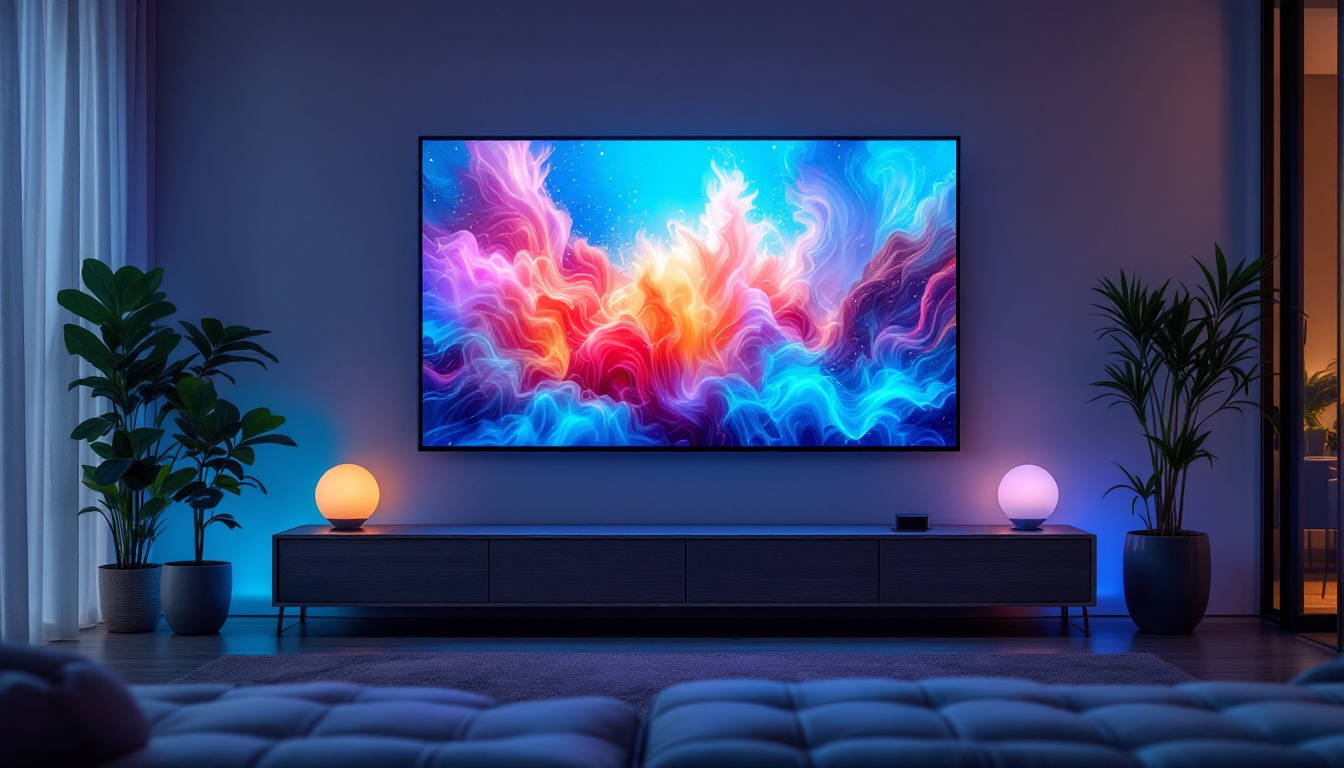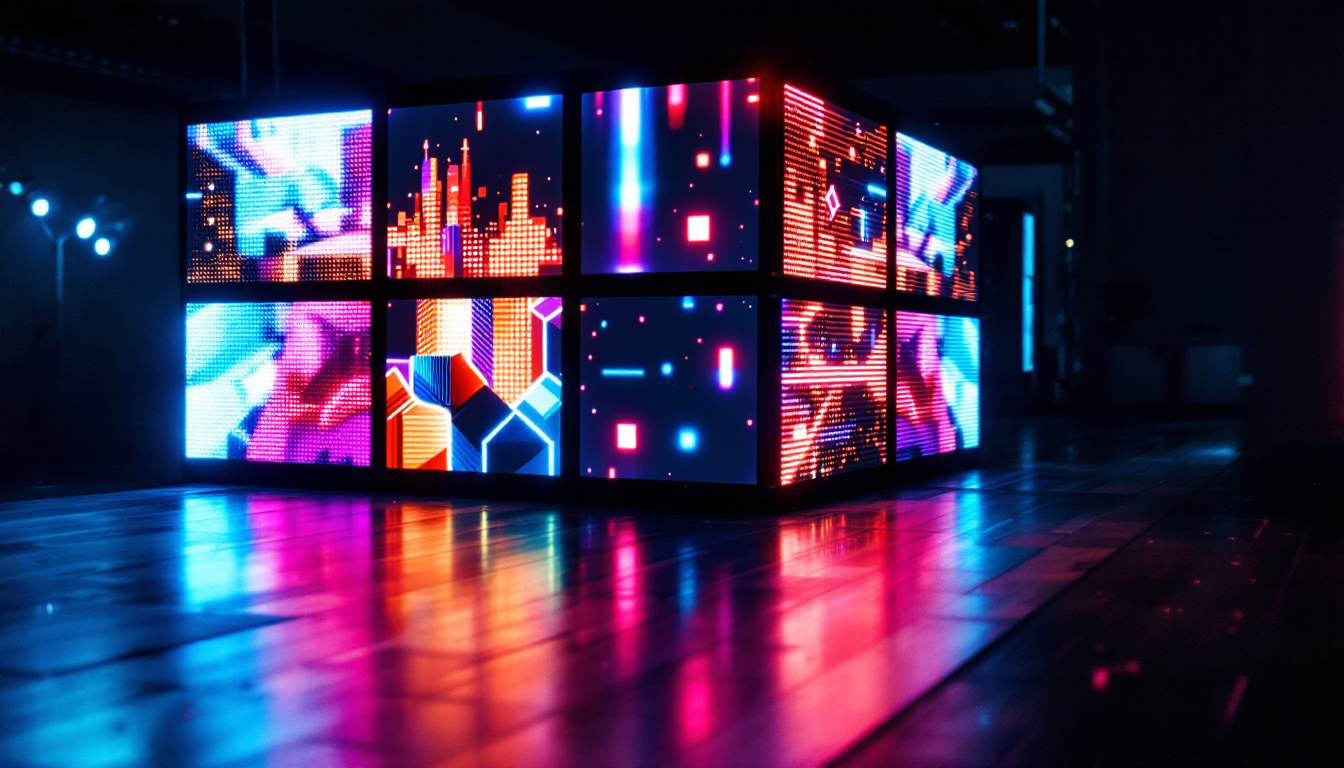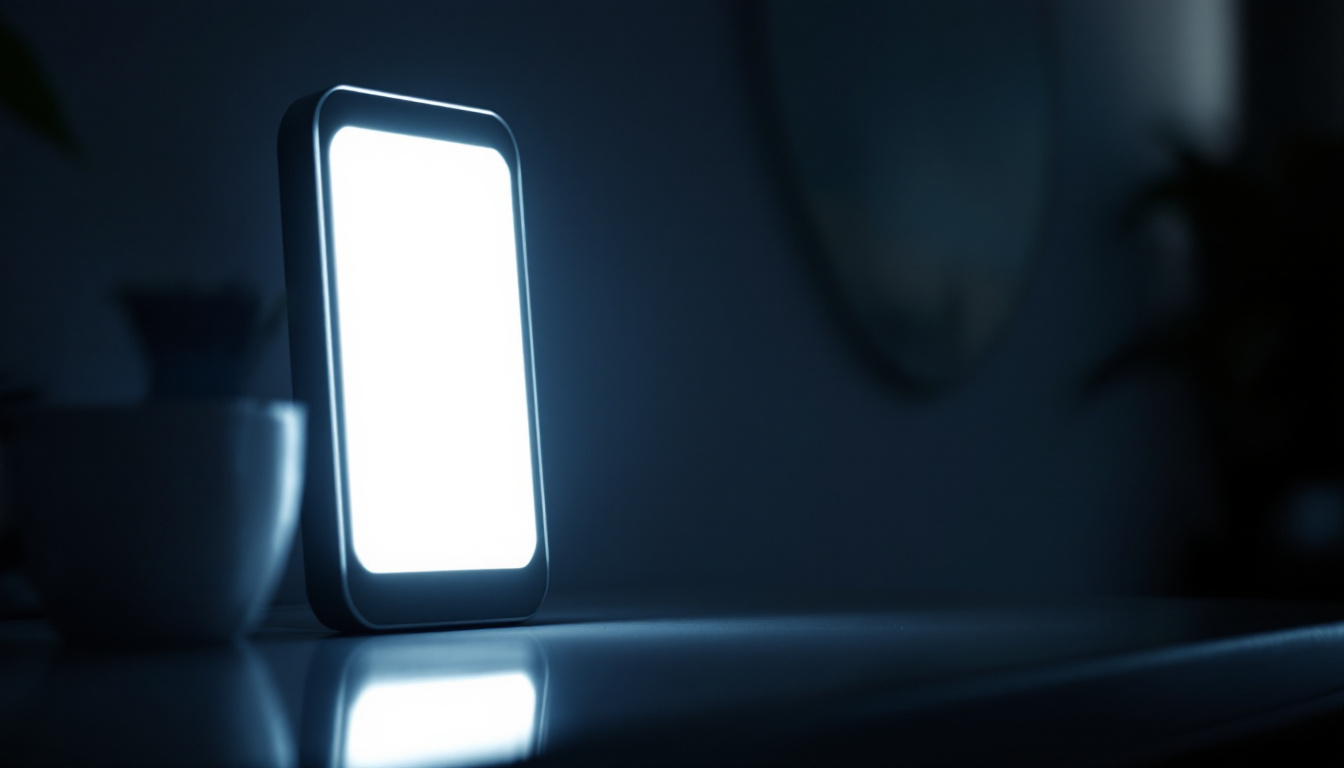In the world of technology, displays play a crucial role in how we interact with devices. Whether it’s for gaming, professional work, or casual browsing, understanding display measurements can enhance the user experience. One common size that often comes up is the 22-inch display. This article will explore the conversion of 22 inches to millimeters, delve into the characteristics of LED displays, and discuss their applications in various fields.
Understanding the Measurement: Inches to Millimeters
Before diving into the specifics of LED displays, it is essential to understand the conversion between inches and millimeters. The inch is a unit of length commonly used in the United States and a few other countries, while millimeters are part of the metric system, which is widely used around the globe.
The Conversion Formula
To convert inches to millimeters, a simple formula can be applied: multiply the number of inches by 25.4. This means that a 22-inch display can be converted to millimeters as follows:
22 inches × 25.4 = 558.8 mm
Thus, a 22-inch display measures approximately 558.8 mm diagonally. This measurement is crucial for understanding the size of the display in a metric context, especially for international consumers and professionals.
Why Measurement Matters
Understanding the dimensions of a display is vital for several reasons. Firstly, it helps consumers determine whether a display will fit in their desired space. Secondly, it aids in comparing different models and brands, ensuring that the right choice is made based on size and specifications. Lastly, for professionals in design and engineering, accurate measurements are essential for creating compatible products.
Moreover, the significance of precise measurements extends beyond mere aesthetics or spatial considerations. For instance, in the realm of digital signage and advertising, the size of a display can influence visibility and engagement rates. Larger displays may attract more attention from passersby, while smaller screens might be more suitable for intimate settings or personal use. This understanding can drive marketing strategies and product placements, ultimately affecting sales and customer interaction.
Additionally, in fields such as architecture and interior design, the conversion between inches and millimeters plays a crucial role in ensuring that all elements of a project align harmoniously. Designers often work with both measurement systems, making it imperative to have a solid grasp of conversions to maintain accuracy in their plans. This attention to detail can significantly impact the functionality and aesthetic appeal of a space, showcasing the importance of measurement in various professional contexts.
LED Displays: An Overview
LED, or Light Emitting Diode, displays have become increasingly popular due to their energy efficiency, brightness, and versatility. Unlike traditional LCD displays, which rely on backlighting, LED displays use diodes to emit light directly, resulting in better contrast and color accuracy. This technology has revolutionized the way we experience visual media, from home entertainment systems to large-scale advertising billboards, making it a staple in both consumer and commercial applications.
How LED Displays Work
LED displays consist of an array of tiny light-emitting diodes that form the pixels on the screen. These diodes can emit various colors based on the electrical signals they receive. The combination of red, green, and blue (RGB) light from these diodes creates a full spectrum of colors, allowing for vibrant images and videos. This pixel-based technology allows for rapid refresh rates, which is particularly beneficial for fast-moving content such as sports or action films, ensuring that viewers experience smooth and fluid motion.
One of the significant advantages of LED technology is its ability to produce deeper blacks and brighter whites. This is achieved by turning off individual diodes in dark areas of the image, leading to a higher contrast ratio compared to traditional displays. Additionally, LED displays are less prone to burn-in, a common issue with older display technologies, making them more durable for prolonged use in various settings.
Types of LED Displays
There are several types of LED displays, each serving different purposes:
- Standard LED Displays: These are commonly used in televisions and computer monitors, providing excellent color reproduction and brightness.
- OLED Displays: Organic Light Emitting Diode displays offer even better contrast and color accuracy, making them ideal for high-end televisions and smartphones.
- Mini-LED Displays: A newer technology that uses smaller LEDs to provide more precise control over backlighting, enhancing the overall picture quality.
In addition to these, there are also MicroLED Displays, which utilize microscopic LEDs to form pixels, allowing for even greater resolution and flexibility in screen sizes. MicroLED technology is particularly exciting for the future of displays, as it promises to combine the best features of OLED and traditional LED displays while eliminating some of their drawbacks, such as the risk of burn-in and limited brightness. Furthermore, Transparent LED Displays are gaining traction in retail and advertising, allowing for innovative designs that can blend into their surroundings while still delivering high-quality visuals. This versatility opens up new avenues for creative display solutions in architecture and design.
Applications of 22-Inch LED Displays
22-inch LED displays are versatile and can be found in various settings, from home entertainment systems to professional work environments. Their size strikes a balance between usability and screen real estate, making them suitable for multiple applications.
Home Use
For home users, a 22-inch LED display can serve as a great option for casual gaming, streaming movies, or browsing the internet. Its compact size allows it to fit comfortably on desks or in living rooms without overwhelming the space. Additionally, many modern LED displays come equipped with smart features, enabling users to access streaming services directly without needing additional devices. This convenience is further enhanced by the integration of voice control and mobile app compatibility, allowing users to manage their viewing experience seamlessly from their smartphones or tablets.
Moreover, the energy efficiency of LED technology means that these displays consume less power compared to traditional LCD screens, making them an environmentally friendly choice for eco-conscious consumers. With the addition of built-in speakers and advanced connectivity options like HDMI and USB-C, a 22-inch LED display can transform into a central hub for multimedia entertainment, accommodating everything from family movie nights to gaming marathons with friends.
Professional Environments
In professional settings, a 22-inch LED display can be used for various tasks, including graphic design, programming, and data analysis. The clarity and color accuracy of LED technology make it suitable for tasks that require precision. Furthermore, multiple displays can be set up side by side to enhance productivity, allowing professionals to work on several applications simultaneously. This multi-monitor setup is particularly beneficial in fields such as finance and software development, where real-time data monitoring and multitasking are crucial.
Additionally, many 22-inch LED displays come with ergonomic features such as adjustable stands and VESA mount compatibility, enabling users to customize their workspace for maximum comfort and efficiency. The lightweight design also facilitates easy relocation within the office, making it simple to adapt to changing project needs or collaborative workspaces. As remote work becomes more prevalent, these displays are increasingly favored for home offices, providing a professional-grade solution that enhances focus and productivity.
Educational Institutions
Educational institutions increasingly utilize 22-inch LED displays in classrooms and lecture halls. These displays can be used for presentations, interactive learning, and displaying educational content. Their ability to provide clear visuals makes them an excellent tool for engaging students and enhancing the learning experience. Teachers can easily share multimedia presentations, videos, and interactive quizzes, fostering a dynamic and interactive classroom environment that caters to various learning styles.
Furthermore, the portability of 22-inch LED displays allows educators to use them in different settings, from traditional classrooms to outdoor learning environments. With the rise of hybrid learning models, these displays can also facilitate remote education by connecting to online platforms, allowing teachers to engage with students both in-person and virtually. The integration of touchscreen technology in some models further enhances interactivity, enabling students to participate actively in lessons and collaborate on projects, thereby enriching their educational journey.
Benefits of LED Technology
LED technology offers numerous advantages over traditional display technologies, making it a preferred choice for many consumers and businesses alike.
Energy Efficiency
One of the most significant benefits of LED displays is their energy efficiency. Compared to older technologies like CRT or even standard LCDs, LED displays consume less power, which translates to lower electricity bills and a reduced carbon footprint. This efficiency is particularly important for businesses looking to minimize operational costs.
Longevity and Durability
LED displays are known for their longevity. With a lifespan that can exceed 50,000 hours, they often outlast traditional displays, making them a cost-effective investment in the long run. Additionally, LED technology is more resistant to shock and vibration, which enhances durability, especially in mobile or industrial applications.
Improved Visual Quality
LED displays provide superior visual quality, with better color accuracy, contrast ratios, and brightness levels. This quality is essential for applications that require precise color representation, such as graphic design or video editing. The ability to display high-definition content also makes LED displays ideal for entertainment purposes.
Choosing the Right 22-Inch LED Display
When selecting a 22-inch LED display, several factors should be considered to ensure that the chosen model meets specific needs and preferences.
Resolution
The resolution of a display significantly impacts the clarity of the images and text it produces. Common resolutions for 22-inch displays include Full HD (1920 x 1080) and 4K (3840 x 2160). For most users, a Full HD resolution is sufficient for everyday tasks, while professionals in graphic design or video editing may benefit from a 4K display.
Refresh Rate
The refresh rate, measured in hertz (Hz), indicates how many times the display refreshes the image per second. A higher refresh rate, such as 144Hz, can provide smoother motion, which is particularly beneficial for gaming or fast-paced video content. For general use, a refresh rate of 60Hz is typically adequate.
Connectivity Options
Modern displays come equipped with various connectivity options, including HDMI, DisplayPort, and USB-C. Ensuring that the chosen display has compatible ports with existing devices is crucial for seamless integration. Additionally, built-in speakers and USB hubs can enhance the overall functionality of the display.
Conclusion
In summary, the conversion of 22 inches to millimeters reveals that a 22-inch display measures approximately 558.8 mm diagonally. Understanding this measurement is essential for consumers looking to make informed decisions about their display options. LED technology, with its energy efficiency, longevity, and superior visual quality, has become the standard for modern displays.
Whether for home use, professional environments, or educational institutions, a 22-inch LED display offers versatility and performance. By considering factors such as resolution, refresh rate, and connectivity options, users can select the ideal display to meet their needs. As technology continues to evolve, LED displays will remain at the forefront, providing users with an exceptional viewing experience.
Discover the Future of Visuals with LumenMatrix
Ready to experience the ultimate in display technology? LumenMatrix is at the forefront of LED innovation, offering a wide range of solutions tailored to your needs. From the immersive Indoor LED Wall Display to the dynamic Outdoor LED Wall Display, and from the mobile versatility of Vehicle LED Displays to the sleek design of LED Poster Displays, LumenMatrix has it all. Elevate your space with our LED Sports Displays, Floor LED Displays, Custom LED Displays, All-in-One LED Displays, and LED Transparent Displays. Embrace the future of visual communication with LumenMatrix and create unforgettable experiences that captivate your audience. Check out LumenMatrix LED Display Solutions today and transform your visual engagement.

